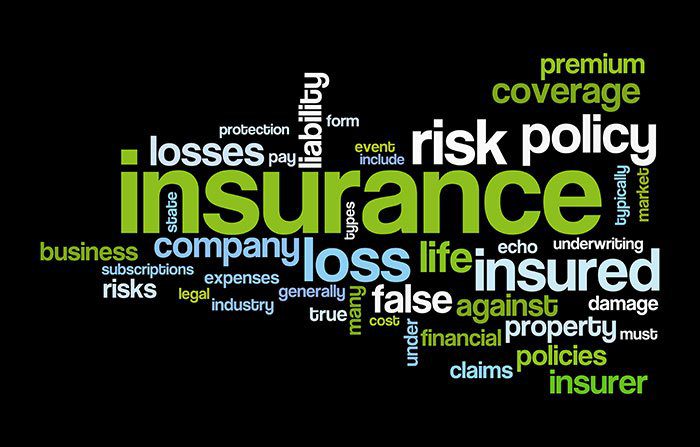If you’ve recently been involved in a wreck, you’re probably wondering how car insurance works. Â Either you’ve paid for insurance for years and now you finally need to use it, or you want to know about the insurance for the person who caused the wreck and your personal injuries. Â You’ve come to the right place. Â Below, we have provided you with the Guide to Insurance. Â This guide is applicable regardless of whether you’re here about a motorcycle wreck, car wreck, truck wreck, or any other type of personal injury claim.
People often think that they either have only liability insurance or they have “full coverage.†But what is full coverage, exactly? It’s actually not even a thing. It’s a made-up phrase that refers to a combination of different types of insurance coverage.
What are the Different Types of Insurance Coverage?
- Liability Insurance
- Uninsured Motorist Protection (UM)
- Underinsured Motorist Protection (UIM)
- Personal Injury Protection (PIP)
- Medical Payments Coverage (Med Pay)
- Collision Coverage
- Comprehensive Coverage
- Rental Reimbursement
- Emergency Road Services
- Customized Parts and Equipment
- Gap Insurance
- Personal Umbrella Protection (PUP)
How Do I Know What Types of Insurance Coverage I Have?
The best way to determine which types of insurance coverage you have is to look at your “policy declarations†page. Your policy declarations page can often be found through your insurer’s online portal or app. You can also call your insurance agent and ask them for a copy of your policy declarations page.
How is coverage listed on a policy dec page?
Typically policy declarations pages identify coverage by naming the type of coverage and placing a numerical figure beside it. For example, the word “underinsured†will be listed on the left. The number “30†will be listed to the right of “underinsured.†This indicates that you have $30,000 in underinsured motorist coverage.
Sometimes policy declarations pages can be confusing. If you want us to take a look at your policy declarations page, we’d be happy to determine what type of coverage you have free of charge.  Give us a call at (817)820-0100 or fill out a free case evaluation.
Liability InsuranceÂ
Liability insurance covers damages (medical, lost wages, pain and suffering, mental anguish, disability, disfigurement, death and property) another person sustains as a result of an accident for which you are negligent – i.e. responsible for. Liability insurance is the most basic type of coverage and the State of Texas mandates that every driver on the road has liability insurance.
That being said, not every driver complies with this law. If you’re hit by someone who doesn’t have liability insurance read below about uninsured motorist coverage.
Liability Coverage Limits
When you look at your policy declarations page or insurance policy, you will notice different types of liability limits:
Property Damage:  The “property damage†liability limit is the maximum amount an insurance company will pay for damage to another person’s property.
Bodily Injury Per Person Liability Limit: This limit establishes the maximum amount an insurance company will pay for each person who is injured in an accident caused by the at-fault party.
Bodily injury Per Accident Liability Limit: This limit caps the total amount an insurance company will pay for ALL bodily injury damages caused in a single accident. Â This is best explained the following example.
- You rear-end a car with three people in it. Your bodily injury per person liability limit is $30,000 and your bodily injury per accident liability limit is $60,000. If Person A’s medical bills total $15,000, Person B’s cost $30,000 and Person C’s cost $10,000, then your insurance will most likely cover all the damages since each person’s individual damages are below $30,000, and the total cost of injuries is $55,000, which is below your $60,000 bodily injury per accident liability limit.
What is the minimum liability limit required in Texas?
In Texas, the minimum limits of liability coverage is $30,000. You may select more coverage. The following are typical amounts of liability coverage: $50,000, $100,000, $250,000, $500,000 and $1 million.
What Happens if the At-Fault Party Doesn’t Have Enough Liability Coverage for the Damages?
If there is not enough liability coverage, the at-fault party is personally responsible for damages in excess of the liability policy.
- Take our example above. If Person C has damages in the amount of $20,000, you would be personally responsible for $5,000 even though each person’s damages is below the $30,000 per person limit  ($15,000 + $30,000 + $20,000 = $65,000 – which is $5,000 more than the $60,000 per accident liability limit).
- Assume further that you rear-ended a car with only one person in it and that person’s damages were greater than $30,000. You would be personally responsible for the damages in excess of the $30,000.
If you’ve been injured in a wreck and your damages are greater than the liability limits, read below about underinsured motorist coverage and umbrella coverage.
What does liability insurance not cover?
Liability coverage usually does not cover damages to your own car or any damages related to your own injuries for an accident you caused. Other types of insurance may cover these damages. For example, collision coverage typically covers property damage to your vehicle.
Liability coverage also does not extend to your injury costs. If you want this type of coverage, you may want to consider medical payments coverage or personal injury protection.
If I’m riding in someone else’s car and they are at fault for the wreck, does their liability insurance cover my injury-related damages?
Generally, yes.
Uninsured (UM) and Underinsured (UIM) Motorist Protection
Uninsured motorist protection (UM insurance) is typically triggered when someone without liability insurance negligently causes a wreck in which you sustain injuries.
Underinsured motorist coverage (UIM insurance), on the other hand, comes into play when an at-fault driver’s liability limits are lower than your injury-related damages. Usually, the at-fault driver’s insurance company will cover all damages up to their insured’s policy limits. If you have underinsured motorist protection, it should cover the excess amount up to your underinsured policy limits.
Does Uninsured Motorist Cover me in a Hit-and-Run?
Yes, if you have uninsured motorist coverage, it will pay for damages related to your injuries sustained in a hit-and-run incident.
What types of “Damages†does uninsured and underinsured motorist coverage cover?
UM and UIM will pay for damages related to injuries you sustained in a wreck. This includes:
- Medical Bills
- Lost Wages
- Pain and Suffering
- Mental Anguish
- Disfigurement
- Impairment
- Death
Does my uninsured or underinsured motorist coverage cover me if I am injured while in another person’s vehicle?
Yes, usually. The language of the policy always controls, but typically your uninsured motorist coverage will pay for injury-related damage you sustained in a wreck caused by a hit-and-run driver or uninsured motorist while riding in someone else’s car.
Did I have uninsured and underinsured motorist protection even if you didn’t purchase it?
Possibly. Â Under Texas law, if the insurance agent who sold you the liability policy did not have you sign a form rejecting UM/UIM, then there is a good possibility that you have UM and/or UIM. In this scenario, your UM/UIM policy limits are usually the same amount as your liability policy limits.
Do I need permission from my UIM insurer to settle with the at-fault party’s liability insurer?
Yes, most UIM policies state that you must obtain their permission to settle with the at-fault party’s liability insurer before you can make a claim with the UIM insurer. Don’t overlook this step or your UIM claim may be barred.
Personal Injury Protection
Personal Injury Protection, commonly referred to as “PIP,†is optional insurance you can purchase to cover your injury-related damages – e.g. medical bills, lost wages, etc.
PIP is “no-fault†insurance, meaning that it will cover your injury-related damages regardless of who was at fault for the wreck, including yourself.
Does the at fault insurer get a credit for what my PIP insurer paid?
In Texas, no. So this means you should be able to collect from your PIP carrier, and the at-fault party’s insurance company can’t reduce what it owes you by what your PIP insurer paid you. This basically means you get to collect twice for the same damages.
How so?
Say you have $2,500 in medical bills from a rear-end collision. The liability insurer for the at-fault party will have to compensate you $2,500 and your PIP insurer will have to reimburse you $2,500.
How much does PIP cover?
That depends on the amount of PIP coverage you purchased. The typical PIP policy is for $2,500, but we have seen PIP coverage for $5,000, $10,000 and even $100,000.
Will filing a PIP claim increase my premiums?
This is one of the most common questions we are asked.
The answer is, we’re not sure.
Technically, since PIP is no-fault insurance, your rates are not supposed to increase. But insurance companies are evil so it wouldn’t surprise me if your rates increased.
We have seen our client’s rates increase even when they were in a wreck caused by someone else and they filed a liability claim only – i.e. they did not file a PIP claim.
Thus, we usually encourage our clients to file a PIP claim. In all likelihood, the amount of money you’re going to collect in PIP coverage will be far greater than the increase in your insurance premiums.
The whole, “my rates are going to increase if I file a claim†is insurance propaganda intended to discourage people from collecting money to which they are entitled. You’ve paid for PIP for how many years? And you’re not going to file a claim now that you’re involved in a situation where you need it? That doesn’t make sense. File the PIP claim!
Are my passengers covered by PIP?
Yes, and unlike liability insurance, there is usually no PIP aggregate limit.
Did you know that you could have Personal Injury Protection even if you didn’t purchase it?
That’s right. Under Texas law, if the insurance agent who sold you the liability policy didn’t have you sign a form rejecting PIP, then there is a good possibility that you have PIP. In this scenario, your PIP limit is most likely $2,500.
If you need help with your PIP claim, give us a shout. In most cases we don’t take a fee on the PIP money we collect for you – usually only if we have to file suit against the PIP insurer to collect it.
Medical Payment Coverage (Med Pay)
Medical Payments Coverage, commonly referred to as Med Pay, pays for medical expenses incurred by you or any passengers whose injuries were caused by an auto accident or auto-related incident.
Unlike PIP, med pay doesn’t cover expenses such as lost wages.
Does the at fault insurer get a credit for what my med pay insurer paid?
Yes, typically. How does this work? Say you have $10,000 in medical expenses that the liability insurer has to pay. Assume that you have $2,000 in med pay. If you have collected med pay, the liability insurer will get a credit for the $2,000 and thus will only have to pay you $8,000.
Collision Coverage
Collision coverage typically pays to fix or replace your vehicle if it is damaged or destroyed in a wreck. Collision coverage usually comes into play in the following situations:
- You’re at fault for the wreck
- The defendant was uninsured
- Liability is disputed
What kind of incidents will collision coverage cover?
Collision coverage is typically triggered when your car is damaged while in operation. See comprehensive coverage below for a discussion about coverage in the event your vehicle is damaged while not in operation.
The policy language will specify what types of accidents are covered by collisions coverage but common ones are:
- Hitting another car;
- Hitting a stationary object, like a bridge or a tree;
- Someone or something else hitting your parked car
What is a collision coverage deductible?
Unlike PIP, liability and uninsured motorist coverage, collision coverage has a deductible.
Deductibles are no fun. When you were signing up for collision coverage, you selected a deductible amount. The higher the deductible, the lower your premium was which means you may have selected a high deductible to save money up front.
Premium v. Deductible
Sometimes people get deductibles confused with premiums.
AÂ premium is the amount you pay per month, year or every six months for your insurance coverage regardless of whether a claim is made.
A deductible, on the other hand, is “paid†when a claim is made. It is is the amount you “pay†out of pocket for a portion of the damages (i.e. cost of repair) sustained. Any amount after the deductible is typically covered up to the actual cash value of your car. Deductibles are between $0 and $1,000.
What is actual cash value?
Actual cash value is an insurance term that is basically calculated by taking into account the price of your car when it was purchased as well as the age and condition of your vehicle.
How collision coverage works when there is a dispute in liability
Collision coverage may also come into play if there is a dispute in liability between your insurance company and the other person’s insurance company – i.e. a dispute about who was at fault for the wreck.
If there is a dispute about fault, the other insurance company may refuse to have your vehicle fixed until depositions are taken and fault is determined. If you have collision coverage, it should pay to have your vehicle fixed while fault is determined.
In the event it is determined the other party was at fault for the wreck, your insurance will have a subrogated right to collect from the other insurance company what it paid you. In so doing, your insurance company will also collect your deductible from the other insurance company and should write you a check for it once it is collected.  For more information about “subrogation†read our blog or watch our blog on subrogation.
Comprehensive Coverage
Comprehensive coverage is a type of property damage coverage that pays for damage to your vehicle in the event it was damaged even when it was not in a wreck.
What does comprehensive insurance cover?
Comprehensive insurance typically covers damage to your vehicle caused by the following incidents, among others:
- Natural disasters and storm, including tornadoes, hurricanes, and earthquakes
- Theft and vandalism
- Broken and shattered windshields and windows
- Damage caused by animals
- Falling objects
What is a comprehensive coverage deductible?
Unlike like PIP, liability and uninsured motorist coverage, Comprehensive insurance has a deductible. Like collision coverage, the higher the deductible, the lower the premium.
Premium v. Deductible
A premium is what you pay for your insurance coverage), which means you could have selected a high deductible to save money
A deductible requires you to pay for a portion of the damages out of pocket. The amount above the deductible, if any, is then covered by your comprehensive insurance up to your car’s actual cash value. Typically, deductibles range from $0 to $1,000.
Rental Insurance
Rental reimbursement coverage will provide you with a rental car in the event you’re in a wreck regardless of who caused the wreck.
Typically, your rental reimbursement coverage is triggered when:
- You caused the wreck
- There is a dispute about who caused the wreck
- The at-fault party was uninsured
It is a good idea to purchase rental reimbursement coverage.
Say you’re involved in a wreck where you’re absolutely certain the other person was at fault. If for some reason, the other party’s insurance denies liability, then your rental reimbursement coverage will provide you with a rental while the attorneys or insurance companies figure out who actually at fault.
Why would the other party’s insurance deny liability?
Because insurance companies will look for any reason to deny paying for a covered loss. If their insured tells them that the wreck was caused in a way that could potentially put you at fault, the at-fault party’s insurer will typically deny your claim.
In the event liability is disputed, your insurance will provide you with a rental vehicle and then have a subrogated right to collect from the other insurance company what it paid for your vehicle.
For More Information On Rentals and subrogation, Read our Blog on Rental Vehicles After a Car Wreck.
How long will rental reimbursement coverage provide me with a rental?
This depends on whether your car is repairable or a total loss. If your car is repairable, rental reimbursement coverage will provide you with a rental vehicle for the time it takes to repair your vehicle. If your vehicle is totaled, rental reimbursement coverage will provide you with a rental vehicle for the time it takes to find a replacement vehicle.
Emergency Road Services
Emergency Road Service Insurance, also known as roadside assistance, basically provides coverage for when your car breaks down or won’t start. Each policy is different but most cover fixing a flat tire, jump-starting your vehicle and towing.
Some insurance companies offer a membership package that you can purchase while others offer a pay-per-use service. If you are considering roadside assistance coverage, don’t forget to take into account things such as the environment in which you drive and the age and condition of your vehicle.
Customized Parts and Equipment
Most collision and comprehensive insurance coverage provide for replacement of “factory†parts only. Customized parts and equipment coverage protects all your equipment, electronic and pneumatic devices, accessories, add-on and alterations you make to your vehicle whether it be for performance or appearance. In other words, this coverage covers everything “extra†you add to the vehicle.
Coverage limits vary on this type of coverage as well as the type of coverage. Typically, we see customized parts and equipment coverage in the amount of $4,000 – $5,000. In addition, you can select coverage at replacement cost value or actual cash value. Actual cash value deducts depreciation meaning you receive less than what it costs to replace a damaged part. Accordingly, we recommend replacement cost coverage.
It is important that you sufficiently and thoroughly document all “extra†parts otherwise when you make a claim, your insurer is likely to deny it.
Liability insurance may cover your extra parts if the wreck is caused by someone else, but it’s possible that the liability coverage may not be enough. Accordingly, if that happens, you should file a claim on your customized parts and equipment coverage.
Gap Insurance
Are you familiar with the age-old rule that a new car significantly drops in value right after its driven off the lot? Well, gap insurance will protect you if you’re financing the car.
Example of Gap Insurance Protection
Consider the following example. You purchase a new car for $30,000. You finance it at 3% over 5 years meaning that the total pay off, with interest, is $34,500. Assume that you drive it off the lot and the next day someone rear-ends you.
Assume that an expert says that the value of your car was only $28,000 moments prior to the wreck (the $2,000 drop in value being attributed to the fact that it was a brand new car driven off the lot).
Now, pretend further that your car was deemed a total loss.
Under Texas law, the insurance company for the at-fault party is only required to pay you the fair market value of your vehicle just prior to the wreck. Thus, in this situation that would be $28,000. But the loan is still outstanding, right! And you purchased the car for $30,000 and still owe $34,500 when we throw in the interest.
What are you supposed to do?
You probably can avoid having to pay for the interest if you pay off the loan. But you only received $28,000 from the at-fault party’s insurer, thus you still owe $2,000 on the principal of the loan. Where is that money supposed to come from?
Well, gap insurance, if you have it.
Thus, as you can see from the above example, gap insurance is used to cover the “gap†created between the value of the vehicle and what you actually owe on it.
Personal Umbrella Protection (PUP)
Personal umbrella protection, also known as “PUP†is additional liability insurance. Its purpose is to help protect you from exposure of major claims.
PUP provides additional liability coverage above your homeowners, automobile and other vehicular policies. PUP is additional, so it doesn’t kick in until all other policies have been exhausted.
Most PUP policies also provide coverage for claims that would otherwise be excluded by liability policies. These include claims for false arrest, slander and libel, and coverage on rentals you own.
What does PUP Cover?
PUP generally provides coverage for the following:
- Property damage
- Bodily injury
- Certain lawsuits
- Personal liability situations as described in the “Liability Insurance” section above
Questions about Insurance or Want to Discuss With a Lawyer?
If you have any questions about what you’ve read or seen here, please feel free to give us a call at the office for a free initial consultation. You can reach us at (817) 820-0100. You can also fill out a questionnaire form online.














